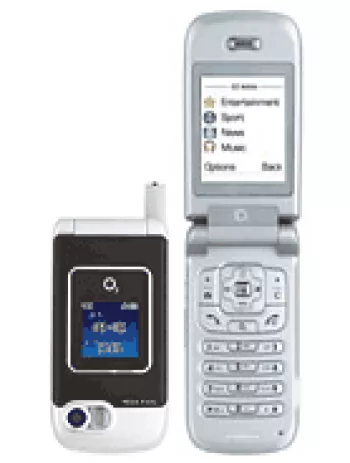
Device Overview
The O2 XM is a feature phone that debuted in the second quarter of 2005. As a representative of the mid-2000s mobile technology, it presented a range of functionalities that catered to the needs of the users of that era. Although discontinued now, it offers a glimpse into the design and capabilities of mobile devices during that period.
Network Technology
The O2 XM operated on GSM network technology. It was capable of connecting through 2G bands, specifically GSM 900/1800/1900, and supported GPRS (General Packet Radio Service) with Class 10 speed. Unlike more advanced technologies available today, it did not support EDGE connectivity. The limitation to 2G technology reflects the technological landscape of the mid-2000s, when 3G was just beginning to emerge.
Launch and Discontinuation
Officially announced in the second quarter of 2005, the O2 XM entered the market aiming to meet the demands of users looking for reliable communication devices. However, as technology rapidly advanced, the device was eventually discontinued, leaving it as a part of mobile history.
Physical Dimensions and Design
In terms of design, the O2 XM had compact and practical dimensions, measuring 89 x 47 x 23.5 mm and weighing 91 grams. Its slim profile was convenient for users who preferred ease of portability. The phone utilized a mini-SIM card, which was standard for that era.
Display Features
The phone featured a TFT display capable of rendering 256K colors. Its resolution was 176 x 220 pixels, which was common for feature phones in that period. The lack of detailed size specification suggests a standard small screen typical of non-smartphone devices, focusing primarily on functionality over media consumption.
Memory and Storage
The O2 XM offered an internal storage capacity of 13.8MB, suitable for storing basic data and applications. It supported MMC/SDIO card expansion, allowing users to enhance storage capabilities, a necessary feature for increasing multimedia demand. The phone's phonebook could store up to 250 entries with photocall functionality, reinforcing its role as a communication tool.
Camera Specifications
Equipped with a single 1.3 MP main camera, the O2 XM allowed basic photography and video recording. While the camera’s resolution was modest by today’s standards, it provided a valuable tool for capturing moments in a time when mobile cameras were still burgeoning innovations.
Audio and Multimedia
On the sound front, the device did not incorporate a built-in loudspeaker or a 3.5mm audio jack, but it facilitated alert types including vibration and downloadable polyphonic or MP3 ringtones. This lack of a headphone jack steered users towards wireless or alternative audio solutions, given the technological norms of that period.
Connectivity and Communication
Despite lacking modern communication features like WLAN, Bluetooth, and GPS, the device supported essential connectivity for its time. It did not implement radio or USB connectivity either, illustrating the limitations of technology and consumer needs during its inception. Messaging capabilities included SMS and MMS, supporting basic text and multimedia communication.
Browser and Applications
The phone came with a WAP 2.0/xHTML browser, enabling users to access simplified internet content through mobile websites. It supported Java applications, specifically MIDP 2.0, allowing users to install and use a variety of apps and games compatible with the Java platform. This feature extended the phone's functionalities beyond mere calling and messaging.
Battery Life
Powering the O2 XM was a removable Li-Ion battery. It offered a standby time of up to 200 hours and a talk time of up to 4 hours. The removable aspect of the battery provided convenience, allowing users to replace the battery as needed, commonly when battery performance decreased over time.
Concluding Thoughts
The O2 XM, with its modest technological specifications, reflects a critical phase in mobile device evolution. Feature phones like the O2 XM were stepping stones in the path to more complex smartphones. They provided essential communication means while incorporating budding mobile technologies such as basic cameras and simple internet access. Although no longer in production, the O2 XM remains a notable device within mobile phone history.
Key Features of O2 XM Device
- Compact and lightweight body with dimensions of 89 x 47 x 23.5 mm and a weight of 91 g.
- TFT display with 256K colors, providing a resolution of 176 x 220 pixels.
- Expandable memory with MMC/SDIO card slot and internal storage of 13.8MB.
- 1.3 MP main camera with video capability.
- Messaging support for SMS and MMS.
- WAP 2.0/xHTML browser for internet browsing.
- Java support (MIDP 2.0) for game and application downloads.
- Removable Li-Ion battery with up to 200 hours of stand-by time and 4 hours of talk time.
O2 XM Key Disadvantages
- Only supports GSM technology, lacking 3G or 4G capabilities.
- No EDGE support, limiting data speed compared to other options available at the time.
- The device is discontinued, meaning no further updates or support.
- Very limited internal storage of 13.8MB, which restricts the ability to store apps and media.
- No front-facing camera for selfies or video calls.
- No loudspeaker functionality, limiting audio playback options.
- Lack of 3.5mm audio jack, requiring adapters or alternate solutions for audio.
- No WLAN (WiFi) capability, meaning reliance solely on cellular data.
- No Bluetooth support for wireless connectivity with other devices.
- No GPS positioning, limiting navigation and location-based services.
- Non-existent radio support, which was a common feature in many phones of the era.
- Small low-resolution display by modern standards (176 x 220 pixels).
- Basic 1.3 MP main camera, which may not meet current photography expectations.

View Also
More Phones
All Rights Reserved +13665 Phones © Mobilawy 2025

























